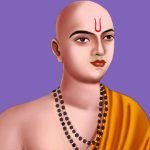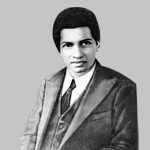हिन्दी में पढ़ें Aryabhata was a famous and great mathematician, astrologer, astrologer and physicist of ancient India. There is controversy regarding the actual place of his birth. Aryabhatta was born in Chamravattam, Kerala.
Some scholars believe that he was born in the region situated between the Narmada and the Godavari, which was known as Ashmaka. At present this region is included in Madhya Pradesh and Maharashtra. However, in some Buddhist texts the location of this region has been described as south.
According to a new study, whereas in Aryabhatta’s book ‘Aryabhattiya’, his birth period is Saka Samvat 398 and birth place Kusumpura is written.
Kusumpura has been identified by Bhaskara as Pataliputra (modern Patna).
Facts about Aryabhata
- Aryabhata was rich in versatility; The evidence of which comes to us from a book called Aryabhattiya composed by him at the age of 23.
- The texts written by Aryabhatta, Dashgitika and Aryabhatiya are accessible to us even today.
- By them, the equations of cube root, square root, parallel series and various types of mathematical applications were created.
- Aryabhattiya, written by Aryabhatta, has given the verses of mathematics and the principles related to the science of constellations.
- The details of the instruments related to astronomy have also been given in the book called Aryabhattiya composed by him.
- The earlier concepts of country and abroad have also been given place in the texts composed by Aryabhatta.
- The theories given regarding the subject of mathematics are still in existence today.
- The Gupta period was going on in India during the time of Aryabhatta. Due to the unprecedented progress made in the field of art, literature and science during this period, it is called the Golden Age of India.
- Aryabhatta had the greatest influence on the world and Indian astrology principles.
- In India, we get to see the most influence of his astrological principles in the astrology tradition of Kerala state.
- While Aryabhatta presented the value of pi (70) more accurate and sure than even Archimedes, on the other hand
- In astronomy, it was first revealed with an example that the Earth rotates on its axis.
- Aryabhata has described a geocentric model of the solar system, In which it was told that the Sun and the Moon move by planetary cycles.
Contribution to the development of science
- According to Aryabhata the relation of circumference and diameter of a circle is 62,832 : 20,000; It is rounded off to four decimal places.
- Aryabhata developed a scientific method of representing large numbers with a set of letters.
- According to the calculations of Aryabhata, the circumference of the earth is 39968.0582 kilometers; Which is only 0.2 percent less than its actual value of 40075.067 km.
- If time is added to modern English units; According to Aryabhata’s calculations, the Earth’s period (period of the Earth in terms of fixed stars) was 23 hours 56 minutes and 4.] seconds, which is 23 hours 56 minutes and 4.9] seconds in modern times.
- Similarly, the duration of the Earth’s year was calculated by Aryabhata as 365 days 6 hours 2 minutes 30 seconds, Which shows an error of 3 minutes 20 seconds from the calculation of modern time.
- According to Aryabhata, there are 4 Manvantaras in one Kalpa and 72 Mahayugas (Chaturyuga) in one Manvantara and Satyuga, Treta, Dwar and Kali Yuga are considered equal in one Chaturyuga.
- The Aryabhatiya book written by Aryabhatta gives principles related to arithmetic, algebra, simple trigonometry and spherical trigonometry.
- The Nalanda University located in Magadha was a major and famous center of knowledge in the Gupta period. Here there was a special department for the study of astronomy. It is mentioned in an ancient verse that Aryabhatta was also the Vice Chancellor of Nalanda University.
- Even before Copernicus, Aryabhata had proved that the earth rotates on its axis. He wrote in ‘Golapada’ that “When a man sitting in a boat moves with the flow, then he understands that the objects like fixed trees, stones, mountains etc. are moving in reverse, in the same way the fixed stars from the moving earth also move in reverse. appear to be leaving.”













